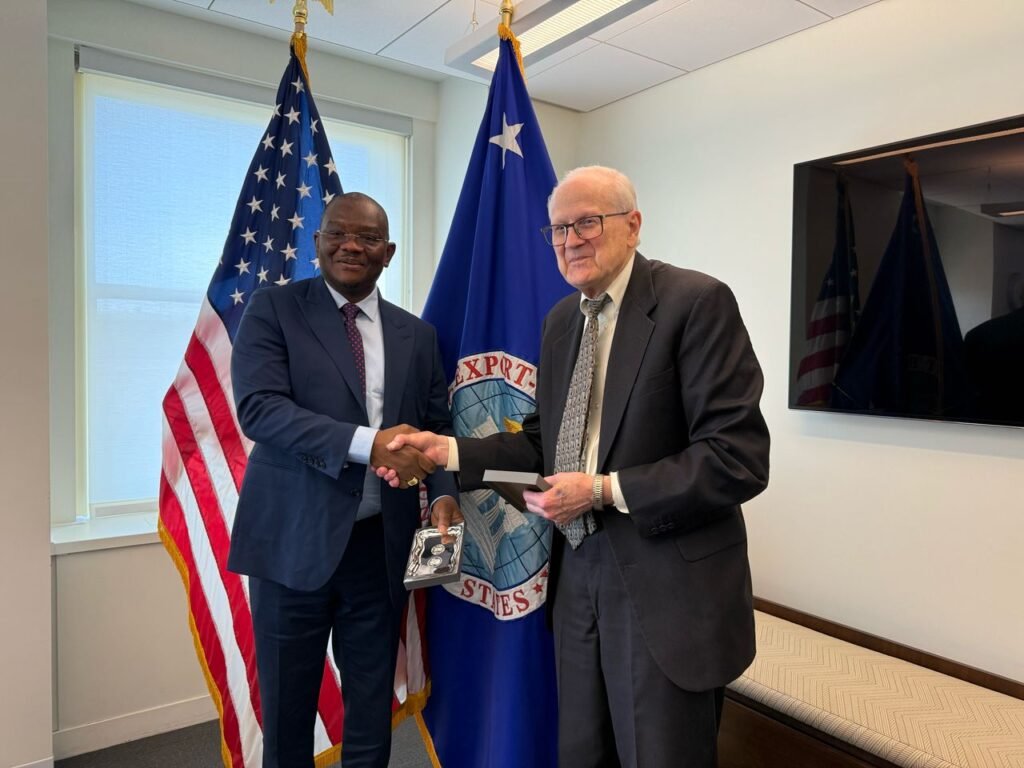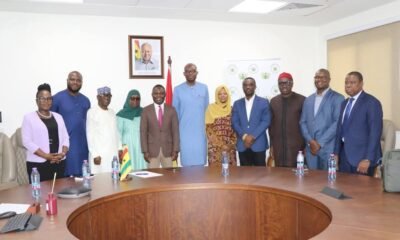Hot!
I’ve built more roads under my administration than Mills/Mahama combined – Akufo-Addo

The President of the Republic, Nana Akufo-Addo, has stated that his administration has constructed more roads than the combined road infrastructure achievements of the Mills/Mahama era.
He made these remarks when speaking at the sod-cutting event for the Anwiankwanta-Ahenema Kokoben Road dualization on Monday, July 15, 2024.
President Akufo-Addo at the ceremony highlighted the scale of road infrastructure under his Presidency.
He said, “We have completed 12,830 kilometres of roads since 2017, a stark contrast to the 4,636 kilometres achieved from 2009 to 2016.”
He further highlighted the extensive roadworks including asphalt overlays, new constructions, bridges, and ongoing interchange projects.
“The progress made sets a high standard and serves as a blueprint for what can be achieved with dedication and strategic planning. Successive governments must ensure sustained investment in infrastructure to address the road deficit and meet the evolving needs of our rapidly growing population,” the president said.
Nana Addo Dankwa detailed the various types of roadworks undertaken in the Ashanti Region, which include asphalt overlays, new constructions, graveling/re-graveling, reconstructions, rehabilitations, and the construction of two bridges at Susanso-Anloga and Kokoso-Bohyen.
The President also assured that contractors working on the Suame interchange project will complete the first phase by the end of 2024.
He revealed that work has also started on the main interchange project.
Against this backdrop, he assured of his government’s commitment to the timely completion of the entire project. This follows persistent complaints by motorists on the stretch.
“The Akufo-Addo government remains focused on its commitment to dualising roads in densely populated areas along our major corridors. A key initiative to demonstrate our dedication to decongesting these vital regions,” he said.
The strategic projects we’re initiating such as the dualisation of the Ofankor-Nsawam road, and the Adenta road, are not merely infrastructure projects, it’s also a confirmation of the government’s approach to solving real-life challenges.
President Akuffo-Addo added, “Government is committed to replicate such successful initiatives along other corridors of the region such as Suame Roundabout to Tafo-Pankrono…Another important project in the region is the construction of the Suame Interchange, the project is progressing steadily.”
“The overpass on the Offinso road, Anomangye-Magazine road, Abusuakurowa, as well as 15 kilometres of the road around Suame roundabout are some 40% complete. It is programmed that these overpasses will be successfully completed before the end of this year,” he said.
Hot!
GEXIM deepens relations with US EXIM Bank

A management team of the Ghana Export – Import Bank (GEXIM) led by the Acting Chief Executive, Sylvester Mensah met with the leadership of the Export–Import Bank of the United States (US EXIM) on Wednesday April 23, 2025 in Washington DC, United States of America.
The Acting President and Chairman of US EXIM, Mr. James C. Cruse and Vice President, International Relations, Ms. Isabel Galdiz received the GEXIM delegation, which included Deputy CEO for Banking, Mr. Moses Klu Mensah and Head of International Cooperation, Mr. Jonathan Christopher Koney at the headquarters of US EXIM.

The meeting offered the GEXIM team the opportunity to share the strategic direction of the Bank in line with the resetting agenda of the President of the Republic, His Excellency John Dramani Mahama for the repositioning of the Ghanaian economy into an export-led one by providing the requisite investment to Ghanaian businesses.
Mr. James C. Cruse expressed US EXIM’s eagerness to deepen its existing relations with GEXIM and proposed the signing of a new Cooperative Framework Agreement following the expiration of a Memorandum of Understanding signed in 2019 to utilize US EXIM’s medium term loan guarantees to procure machinery by GEXIM for qualified Ghanaian Small and Medium-sized Enterprises (SMEs).
Mr.Sylvester Mensah thanked the Acting President and Chairman of US EXIM for hosting the GEXIM delegation and reaffirmed the Ghanaian government’s commitment to strengthening trade and investment between Ghana and its global partners for economic transformation of Ghana with GEXIM playing a pivotal role.
The two teams will be meeting on the sidelines of the 2025 US EXIM Annual Conference on 29th and April 30, 2025 to explore possible areas of collaboration and matching Ghanaian businesses to American companies. The meeting ended with an exchange of gifts.
Hot!
Many SOEs have been used as mere instruments for personal wealth accumulation –Pres.Mahama

President John Dramani Mahama has expressed concern over the misuse of State-Owned Enterprises (SOEs) for personal financial gain by individuals in leadership positions.
Speaking during a meeting with Chief Executives of specified entities under the State Interest and Governance Authority (SIGA) on Thursday, March 13, the President directly attributed the dire state of SOEs to their leadership, accusing chief executives, management teams, and governing boards of prioritising personal enrichment over organisational efficiency.
He pointed to bloated budgets, unjustified allowances, and unnecessary expenditures as factors draining public funds while SOEs continue to rely on government bailouts.
“Many SOEs have been used as mere instruments for personal wealth accumulation by appointees. The chief executives, management, and boards of these enterprises are responsible for this situation. Some SOEs have become perennial loss-makers, draining public funds with bloated budgets, unjustified allowances, and unnecessary expenditures while relying on government bailouts as if entitled to them. Many of these entities are at their lowest point in the entire history of the Fourth Republic,” he said.
President Mahama further noted that many SOEs have been plagued by inefficiencies, corruption, and mismanagement, leading to consistent financial losses. He cited the 2023 State Ownership Report by the State Interests and Governance Authority (SIGA), which highlighted systemic inefficiencies and wasteful expenditures within these entities.
He therefore reaffirmed his commitment to reforming under-performing SOEs and ensuring they serve national interests.
He warned that loss-making SOEs will no longer be tolerated and will either be merged, privatised, or closed.
“I will assess you based on your performance. If you do not align with the pace of the reset agenda, you may be asked to step aside. If that adds to the horror movie, so be it,” he added.
Source: Myjoyonline.com







